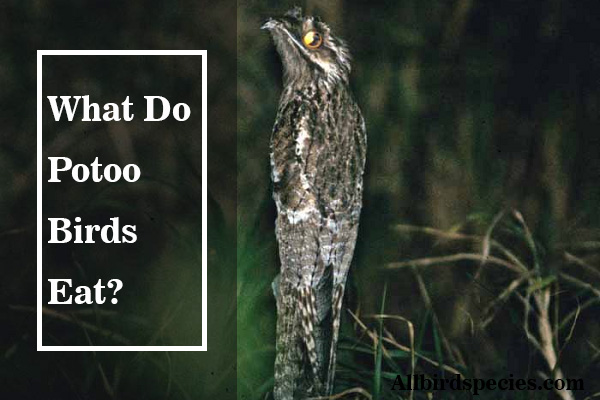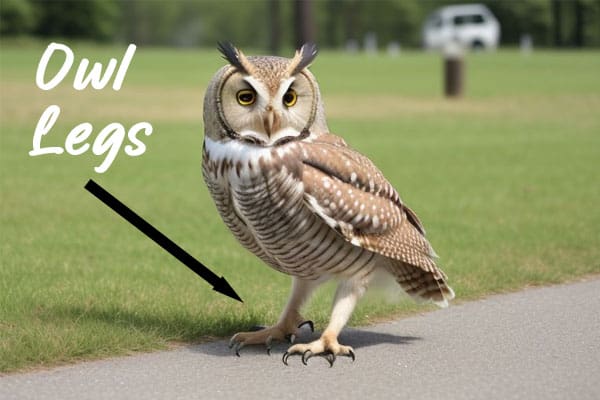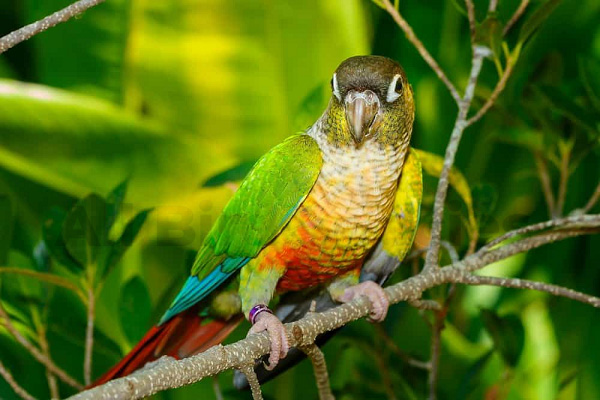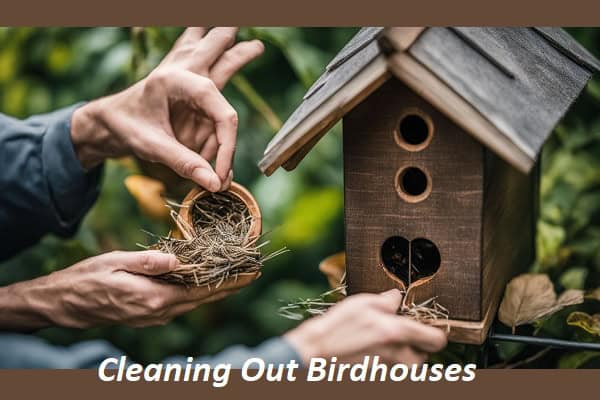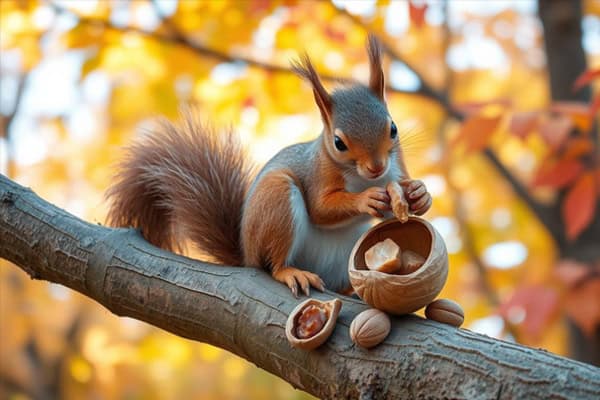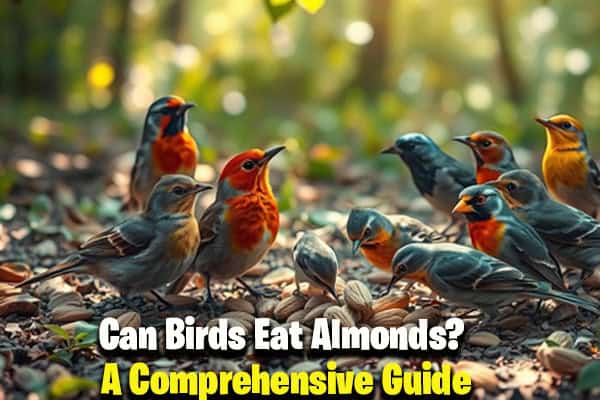Potoo Birds Diet: What Do Potoo Birds Eat?
Potoo birds’ diet is as mysterious as their nocturnal calls. In my research, I’ve delved into their unique eating habits. These elusive night hunters feast on a variety of insects and small vertebrates. Their survival hinges on remarkable hunting adaptations and the rich biodiversity of their habitats. Join me as we uncover the secrets behind what sustains these fascinating birds. It’s a journey through the shadows to reveal the unexpected menu of the potoo.
Key Takeaways:
- Potoo birds have unique dietary habits that differ from traditional bird species.
- They are nocturnal hunters, making them active during the night.
- Potoo birds inhabit Central and South American rainforests and forest edges.
- Their diet consists of various prey, including flying insects and small birds.
- They have remarkable adaptations and defensive mechanisms to survive in their natural habitat.
Potoo Birds: Nocturnal Hunters of the Night
When the sun sets and darkness envelops the canopy of the rainforest, a truly remarkable spectacle takes place. Potoo birds, with their large eyes and distinctively camouflaged plumage, emerge as nocturnal hunters of the night. These incredible creatures have adapted to thrive in the darkness, employing unique hunting habits that set them apart from their diurnal counterparts.
The nocturnal nature of potoo birds, including the great potoos, allows them to maximize their hunting prowess during the cover of the night. While many bird species are active and foraging during the day, potoos have evolved to take advantage of the abundance of prey that is available in the darkness. Their keen senses, particularly their exceptional eyesight and acute hearing, serve as invaluable tools for locating and capturing their prey.
Advanced Night Vision
One of the key adaptations that enable potoo birds to excel as nocturnal hunters is their advanced night vision. Their large eyes, relative to their body size, are specially designed to gather as much light as possible in low-light conditions. This allows them to see clearly even in the darkest of nights, giving them a significant advantage over their prey.
Furthermore, potoo birds have a reflective layer behind their retinas, known as the tapetum lucidum, which amplifies any available light. This adaptation enhances their night vision, allowing them to detect even the slightest movements of their prey in the shadowy depths of the forest.
Silent Flight and Stealthy Hunting
Potoo birds possess another remarkable adaptation that aids in their nocturnal hunting endeavors – their ability to fly silently. Their specialized feather structure reduces turbulence and minimizes noise, allowing them to approach their prey undetected. This silent flight gives potoos a distinct advantage when it comes to surprise attacks on unsuspecting prey, which may include large flying insects and small birds.
Furthermore, their camouflaged plumage, which blends seamlessly with the bark of the trees they perch upon, adds an element of stealth to their hunting strategy. Potoo birds are experts at remaining inconspicuous, patiently waiting for the opportune moment to swoop down and snatch their prey with lightning-fast precision.
“Potoo birds, with their exceptional night vision and silent flight, have truly mastered the art of nocturnal hunting. Their prowess as elusive predators is a testament to their incredible adaptations and their ability to thrive in the darkness of the night.”
Potoo Birds’ Food Sources in their Natural Habitat
Potoo birds are fascinating creatures that can be found primarily in the lush rainforests and forest edges of Central and South America. Their natural habitat provides them with a rich variety of food sources to sustain their dietary needs.
These mysterious birds have adapted to their environment and have become experts at blending into the foliage, making it easier for them to catch unsuspecting prey.
The Diverse Food Sources of Potoo Birds
Potoo birds have a diverse diet, feeding on a wide range of small creatures that can be found in their habitat. Their feeding preferences include:
- Insects: Potoo birds are primarily insectivorous, and they rely on insects as their main source of food. They have an exceptional ability to catch flying insects, such as moths, beetles, and cicadas, in mid-air. Their unique physical attributes and hunting techniques allow them to snatch their prey with precision.
- Small Birds: Although it is less common, some potoo species have been observed capturing and consuming small birds. This behavior demonstrates the versatility of their diet and their adaptability to different food sources.
The ability of potoo birds to exploit various food sources in their habitat enables them to adapt to different conditions and ensures their survival in a competitive ecosystem.
Did You Know? Potoo birds, with their large heads and exceptional hunting abilities, rely on a combination of camouflage and their ability to remain motionless for extended periods. This unique strategy allows them to blend seamlessly into their surroundings, making it easier to catch their prey.
“Potoo birds have a diverse diet that includes insects and sometimes even small birds, enabling them to adapt to different food sources in their natural habitat.” – Potoo Bird Expert
By understanding the food sources available to potoo birds in their natural habitat, we gain valuable insights into their diet and their role in maintaining the delicate balance of the ecosystem.
Potoo Birds’ Prey: What Sustains Them?
Potoo birds have fascinating adaptations that allow them to efficiently hunt and consume their prey. These adaptations are essential for their survival in their natural habitat. Let’s take a closer look at these remarkable creatures and the types of prey that sustain them.
Hunting Techniques
Thanks to their unique physical characteristics, potoo birds have developed effective hunting techniques. Their adaptations enable them to blend seamlessly into their surroundings, making it easier to ambush unsuspecting prey. Their cryptic plumage provides excellent camouflage, allowing them to remain undetected while waiting patiently for their next meal.
One of the most noteworthy adaptations of potoo birds is their enormous eyes. These large eyes enhance their night vision, enabling them to spot flying insects and small birds even in the darkest of nights. Potoos have a wide field of vision, allowing them to monitor their surroundings for potential prey.
Once they have located their prey, potoo birds employ a strategy known as “still-hunting.” They perch motionlessly on branches, relying on their camouflage to remain inconspicuous. When an opportune moment arises, they swiftly launch themselves into the air, using their powerful wings to chase and capture their prey.
Potoo Prey
Potoo birds primarily feed on a variety of flying insects, such as moths, beetles, and grasshoppers. These insects form a significant portion of their diet and provide essential nutrients for their survival. Potoos are especially fond of species that are attracted to artificial lights, as they make for easy targets.
In addition to flying insects, potoo birds may also consume smaller birds, such as hummingbirds and swifts. These birds are typically captured in mid-air during their own flights, showcasing the exceptional hunting skills of potoo birds.
It’s important to note that the specific prey consumed can vary among potoo species. For example, the Great Potoo (Nyctibius grandis), with its larger size, is capable of capturing and devouring larger insects and birds compared to other potoo species.
The Potoo Bird Prey Table
| Potoo Species | Main Prey |
|---|---|
| Common Potoo (Nyctibius griseus) | Flying insects (moths, beetles, grasshoppers) |
| Tawny-bellied Potoo (Nyctibius sumichrasti) | Flying insects (moths, beetles, grasshoppers), small birds |
| Great Potoo (Nyctibius grandis) | Flying insects (larger moths, beetles, grasshoppers), small birds |
As shown in the table above, different potoo species, including great potoos and long-tailed potoo birds, have slightly different prey preferences. However, flying insects, and occasionally small bats, remain a staple in the diets of all potoo birds, regardless of species.
Understanding these hunting techniques and prey preferences provides valuable insight into the ecological role of potoo birds. Their adaptations, such as their camouflage and large eyes, have allowed them to thrive as efficient nocturnal hunters.
Potoo Birds’ Predators and Defensive Mechanisms
While potoo birds are skilled hunters, they also face predators in their natural habitat. To survive and evade these threats, potoo birds have developed fascinating defensive mechanisms that allow them to blend seamlessly into their surroundings.
Camouflage: Nature’s Master of Disguise
One of the most remarkable features of potoo birds is their exceptional camouflage. Their plumage is intricately patterned to resemble the tree branches and bark, making them nearly invisible to both predators and unsuspecting prey. These nocturnal birds rely on their incredible ability to remain undetected while perched on tree branches during the day.
Plumage and Eyelid Adaptations
Potoo birds possess unique plumage adaptations that enhance their camouflage and help them blend seamlessly with their environment. Their feathers have intricate patterns and colors that mimic the tree bark, providing excellent camouflage when they are roosting. Additionally, potoo birds have an interesting adaptation involving their eyelids. These birds have large, disc-shaped eyelids that partially close when they sleep, resembling knots or bumps on tree branches and further enhancing their camouflage.
By utilizing camouflage and blending effortlessly with their surroundings, potoo birds are able to remain hidden from their predators and increase their chances of survival.
“Camouflage is not just a defense mechanism for potoo birds; it’s their superpower.”
Predators of Potoo Birds
Although potoo birds have evolved efficient defensive strategies, they are not entirely impervious to predators. Some of the predators that pose a threat to these skilled hunters include:
- Great horned owls: These formidable nocturnal predators have keen eyesight and can detect great potoos and long-tailed potoo birds during the night, posing a significant threat to their survival.
- Raptors: Various species of raptors, such as hawks and falcons, also prey on nocturnal birds, including great potoos and long-tailed potoos. These birds of prey have sharp talons and remarkable hunting skills that make them formidable foes.
- Snakes: Certain snake species, particularly arboreal snakes, can climb the trees where potoo birds roost and ambush them.
While potoo birds face these predators, their camouflage and defensive adaptations act as crucial survival tools, minimizing the risk of being detected and increasing their likelihood of evading these threats.
| Predator | Description |
|---|---|
| Great horned owls | Nocturnal predators with excellent eyesight, posing a significant threat to the survival of potoo birds. |
| Raptors | Various species of raptors, such as hawks and falcons, prey on potoo birds, utilizing their sharp talons and exceptional hunting skills. |
| Snakes | Arboreal snakes can climb the trees where potoo birds roost and ambush them, making them potential predators. |
Reproduction and Nesting Habits of Potoo Birds
Potoo birds have a unique and fascinating approach to reproduction and nesting. Let’s explore their lifespan, monogamous nature, breeding behavior, and the process of incubation.
Lifespan
Potoo birds have an average lifespan of around 7 to 8 years in the wild. However, some species have been known to live up to 10 years.
Monogamous Nature
Potoo birds are known for their monogamous relationships. Once they find a mate, they stay together for the long term. Both parents play an important role in raising their offspring, sharing responsibilities such as incubating the eggs and providing food.
Breeding Behavior
During the breeding season, which varies depending on the species and region, potoo birds lay a single egg per breeding season. This egg is laid directly on a tree branch or in a shallow nest, showcasing the solitary nesting habits of potoo birds. The female potoo then takes charge of incubation, where she carefully warms the egg by sitting on it.
Hatch and Incubation
The incubation period for potoo bird eggs typically lasts around 30 to 33 days. Once the egg hatches, the parents continue to care for the chick, providing it with food and protection. The chick grows rapidly and is ready to leave the nest after approximately 4 to 6 weeks.
Overall, the reproduction and nesting habits of potoo birds highlight their commitment to raising their young and ensuring their survival in their natural habitat.
Overview of Potoo Birds’ Reproduction and Nesting
| Aspect | Details |
|---|---|
| Lifespan | Average of 7 to 8 years, with some species living up to 10 years |
| Monogamous Nature | Potoo birds form long-term monogamous relationships |
| Breeding Behavior | They lay a single egg per breeding season and share incubation duties |
| Hatch and Incubation | Incubation period lasts around 30 to 33 days; chicks leave the nest after 4 to 6 weeks |
Final Thoughts on Potoo Birds Diet
In conclusion, potoo birds have a diverse diet that includes a variety of prey. They are skilled hunters, relying primarily on flying insects, small birds, and other prey for sustenance. Their nocturnal nature allows them to take advantage of the abundance of food available during the night.
With their unique adaptations, such as their wide beaks and large eyes, potoo birds are well-equipped for hunting in their natural habitat. These adaptations enable them to catch flying insects with precision and agility. Their cryptic plumage and remarkable camouflage help them blend seamlessly into their surroundings, making them highly effective predators.
Understanding the diet and feeding habits of potoo birds provides valuable insight into their ecological role. As they consume large numbers of insects, they play a crucial role in maintaining the balance of insect populations within their ecosystem. By controlling insect populations, potoo birds contribute to the overall health and stability of the ecosystem they inhabit.
In conclusion, the study of potoo birds’ diet and feeding behaviors not only highlights their fascinating adaptations but also emphasizes the importance of these nocturnal hunters in their respective habitats. As enigmatic and intriguing creatures, potoo birds continue to captivate researchers and bird enthusiasts alike with their unique characteristics and ecological significance.
Frequently Asked Questions
1. What does a potoo eat?
Potoos primarily feed on insects such as beetles, moths, and other flying insects they catch at night.
2. Why are potoo mouths so big?
Potoo mouths are large to facilitate catching insects while flying. Their wide mouths help them snatch insects mid-flight with precision.
3. What is the prey of a potoo bird?
The prey of a potoo bird mainly consists of insects, including beetles, moths, and other small flying creatures found in their habitat.
4. Are potoo birds related to owls?
Yes, potoo birds are distantly related to owls. They belong to the same order, Caprimulgiformes, but are classified into different families.
5. Are potoo birds loud?
Potoo birds are not known for being particularly loud. They are typically quiet and cryptic, relying on camouflage rather than vocalizations to evade predators and capture prey.
6. Can Great Potoos fly?
Yes, Great Potoos are capable flyers. They hunt insects in flight and use their wings to navigate through their forest habitat.

